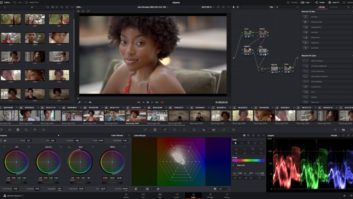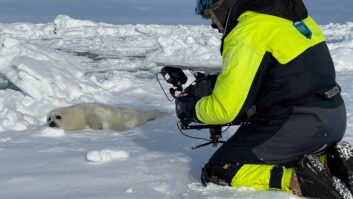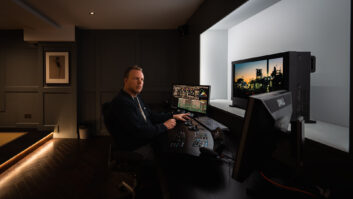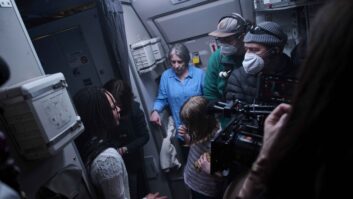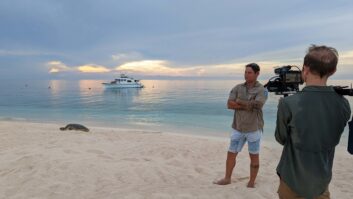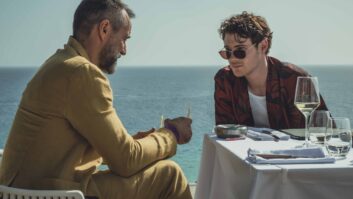Directed by Tim Kirby, Our NHS: A Hidden History tells the untold story of the UK’s National Health Service. David Olusoga meets overseas nurses, doctors and health workers, who in spite of hostility and discrimination, came to Britain and transformed the NHS.
The documentary was edited and graded during lockdown by experienced editor Adam Garstone. Garstone specialises in long form documentary and has previously worked with the BBC, Channel 4, National Geographic, Discovery Channel, amongst many others.
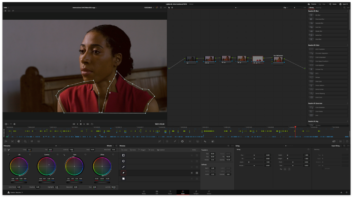 Garstone worked from his home studio with an assistant, with the director able to attend the edit in between lockdown restrictions. The team utilised DaVinci Resolve for post production, including: media management, edit and grade.
Garstone worked from his home studio with an assistant, with the director able to attend the edit in between lockdown restrictions. The team utilised DaVinci Resolve for post production, including: media management, edit and grade.
“I’d used Resolve for entire projects in the past, but this was a real test of its capabilities,” says Garstone. “Creating a broadcast quality project for the BBC, of this size and scale, with such a variety of footage, demanded a great deal from the NLE.”
Interestingly, the team worked entirely in an online workflow, doing away with an offline to streamline the process through edits and approvals.
“Increasingly, executive producers like to see a programme that looks and sounds as close to finished as possible,” says Garstone. “We used online camera material throughout the entire edit, graded as we went and even developed a soundtrack.
“This meant that when submitting the edit to the executive producers, it was in a place where it could be judged accurately. People respond to things viscerally, when you can present an edit as final, a producer can make decisions with confidence.”
The programme tells the story of the NHS through a series of interviews with people from BAME communities in the UK, extensively talking to camera and directly to presenter Olusoga.
“With many interviewees providing extensive in-depth dialogue, we used timing curves to create pauses,” explains Garstone. “We’d use the optical flow to decelerate footage for a few frames ahead of a cut. It created a natural beat to the piece, and prevented it from getting choppy.
“We used a similar process in creating the soundtrack. In Resolve you get sample level editing, even in the edit page; you’re not stuck to frame boundaries. You can slip something by a frame, simply by zooming in and dragging it. It’s a benefit of working in a contained environment and enabled our online workflow.”
With the focus period of the film spanning from the late 1920s to the present day, the programme relied heavily on archive footage from many different sources. The archive footage ranged from 16mm film at 24fps, to beta cam, up to HD and everything in between.
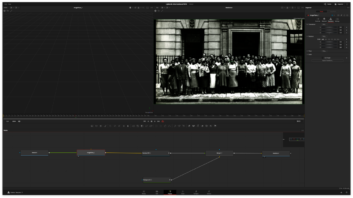 “Getting the archive material into the media manager and linking it to the edit was easy,” says Garstone. “We had a few decisions to make in the settings and converting frame rates, using optical flow or moving to the nearest frame, but it was a straightforward process.”
“Getting the archive material into the media manager and linking it to the edit was easy,” says Garstone. “We had a few decisions to make in the settings and converting frame rates, using optical flow or moving to the nearest frame, but it was a straightforward process.”
In the grade, the A camera was of a higher standard to the B camera, which was mainly used in interviews to create an additional angle. Filmed during covid restrictions, the B camera was often set up in positions where operation was difficult, which resulted in footage requiring focus and exposure adjustments in post.
Garstone explains the linear workflow enabled for an intuitive corrective process. “Working in Resolve meant we were only a click away from the Fusion, Fairlight and Colour pages. We could check if a piece of out of focus footage could be saved, animate a still, or add in a sound effect, with just the click of a button and in a matter of minutes.”
The colour balance was very different between the cameras, particularly in the reds and blues. If someone was wearing a pink or a purple dress, the B camera would render that as red or orange.
“The difference in colour science between the two cameras meant that we needed most of the tools available in Resolve’s colour page. From selective keys to motion tracked shapes, to sharpening,” says Garstone.
“Interestingly we never really locked picture, because offline blended into online. There was never really a final stage of transition. Because we could easily make the changes that people wanted, they were happening all the way up until the last minute,” concludes Garstone.
Our NHS: A Hidden History aired on BBC 1, Thursday the 15th of July 2021.
